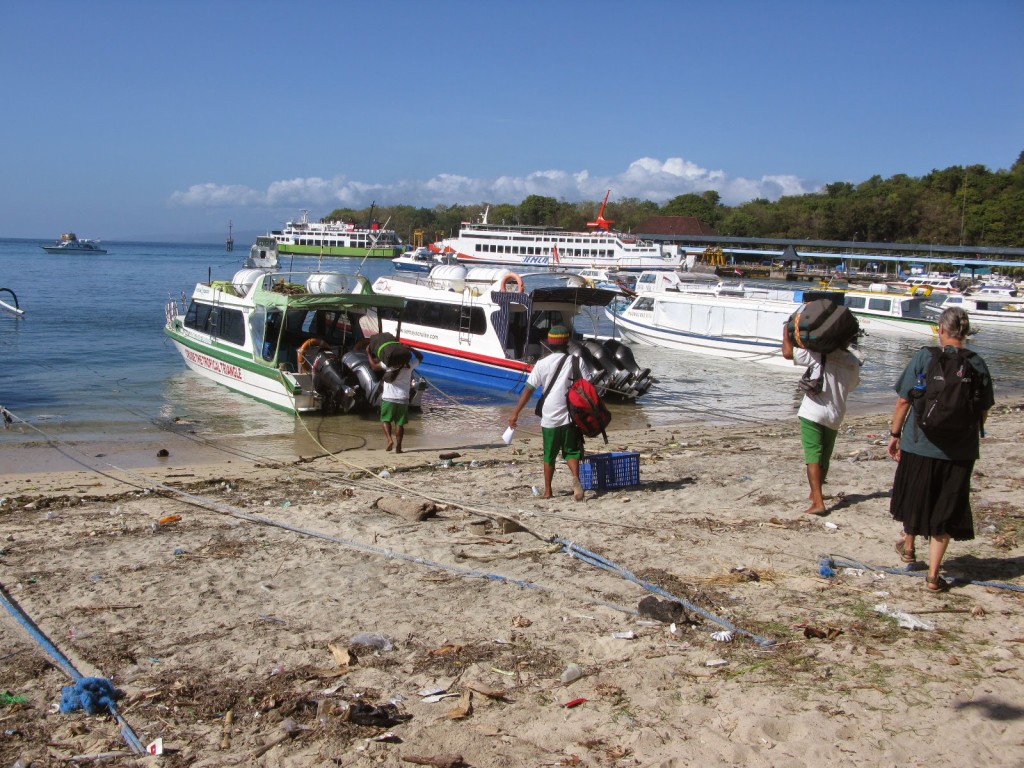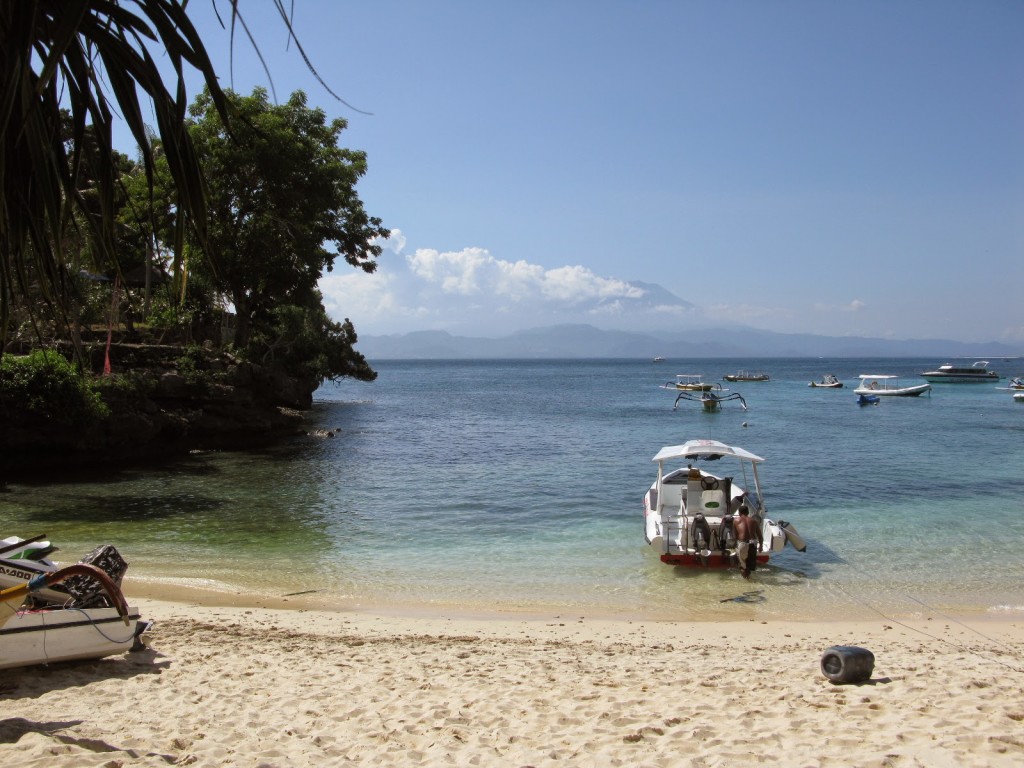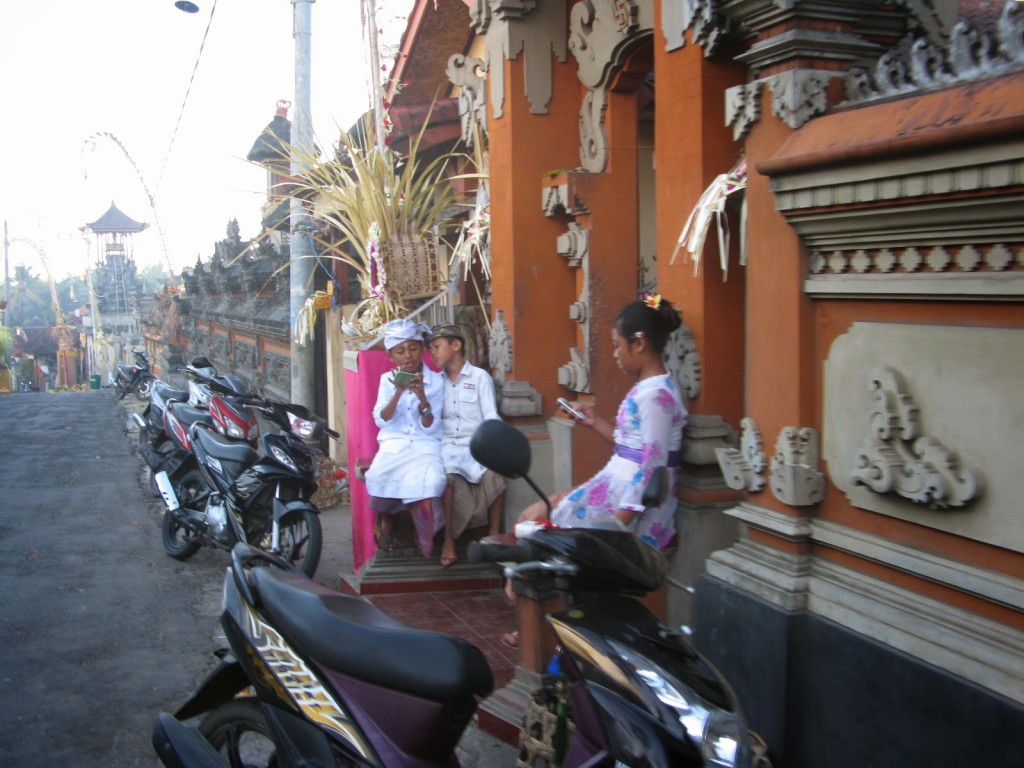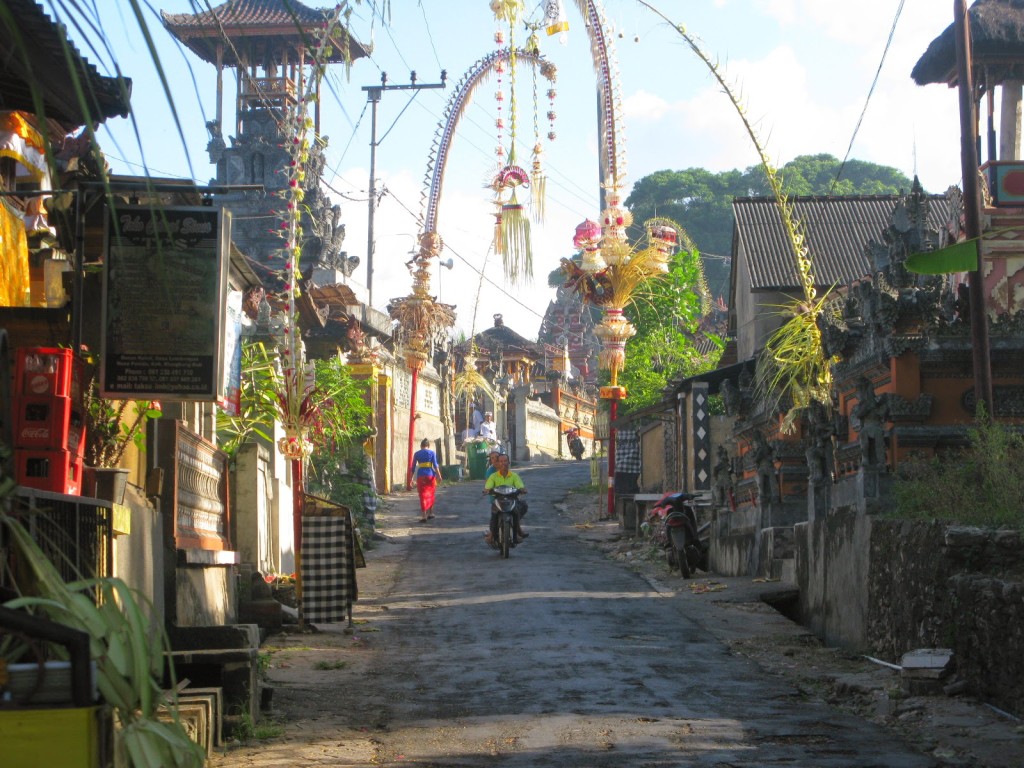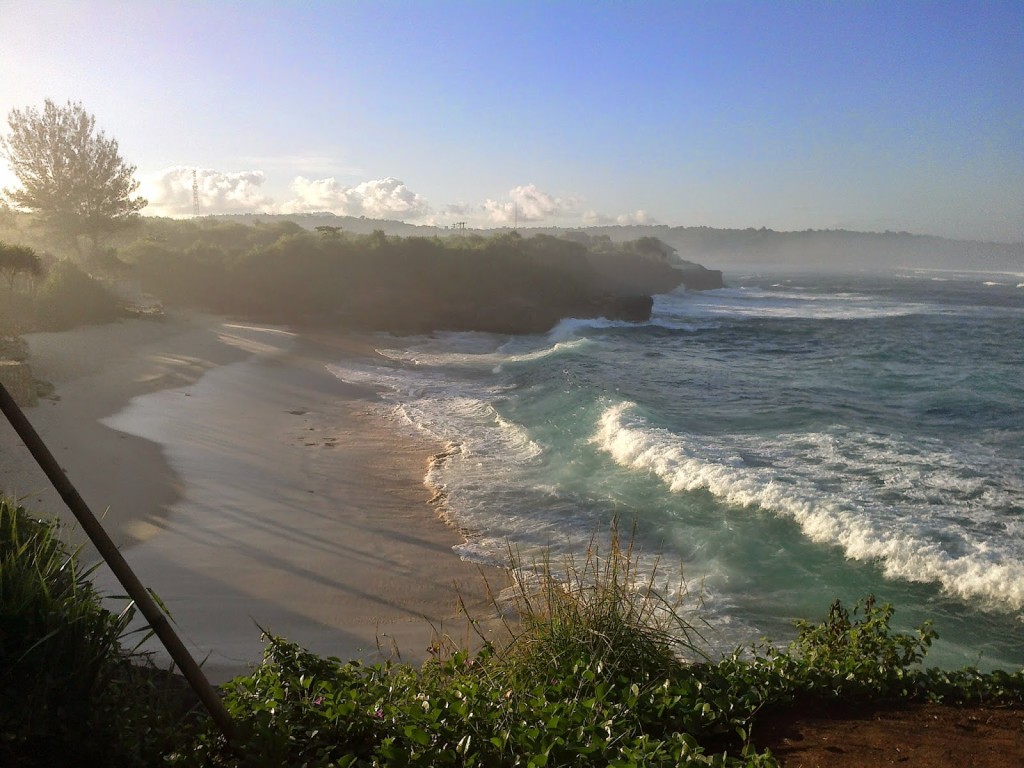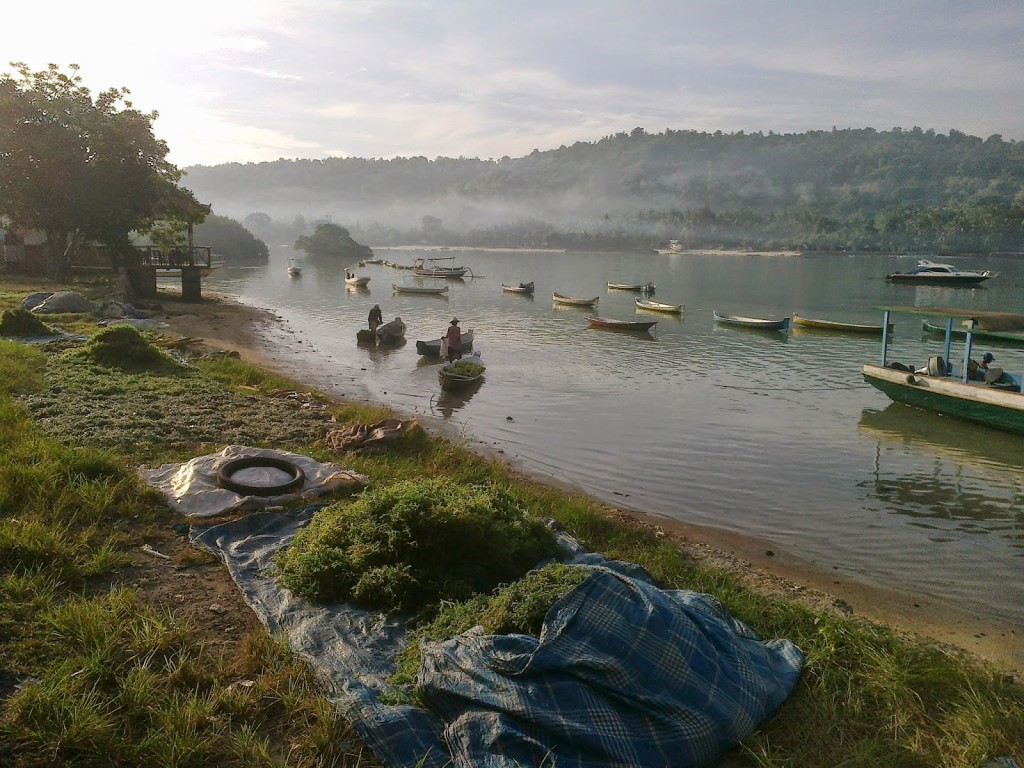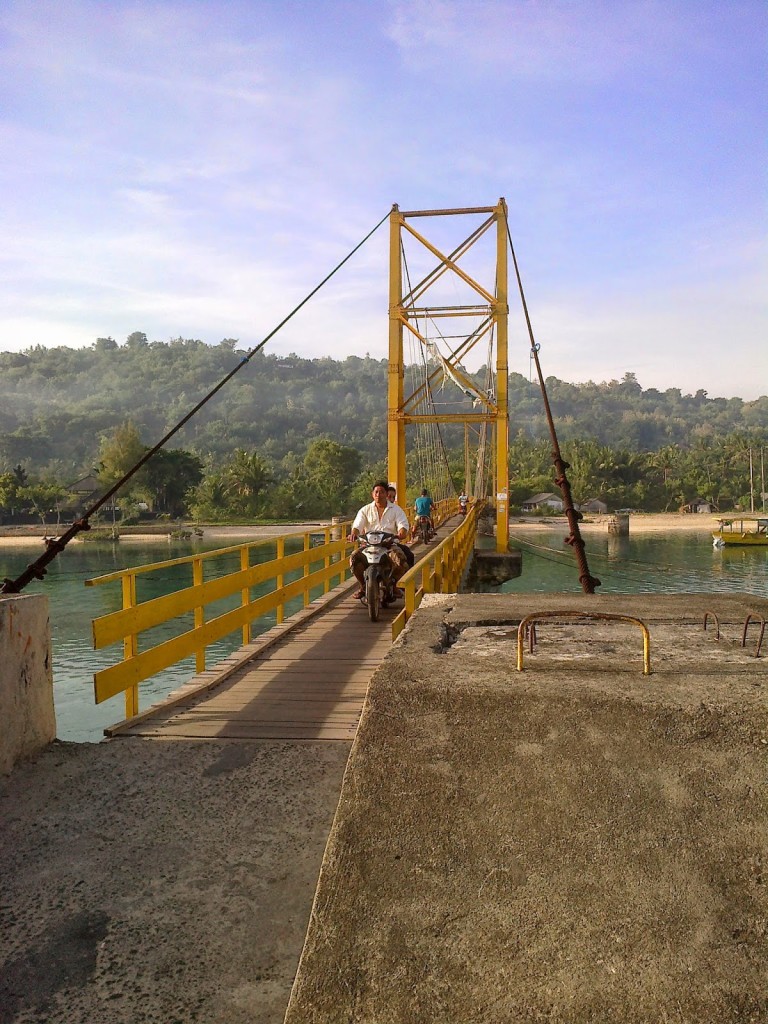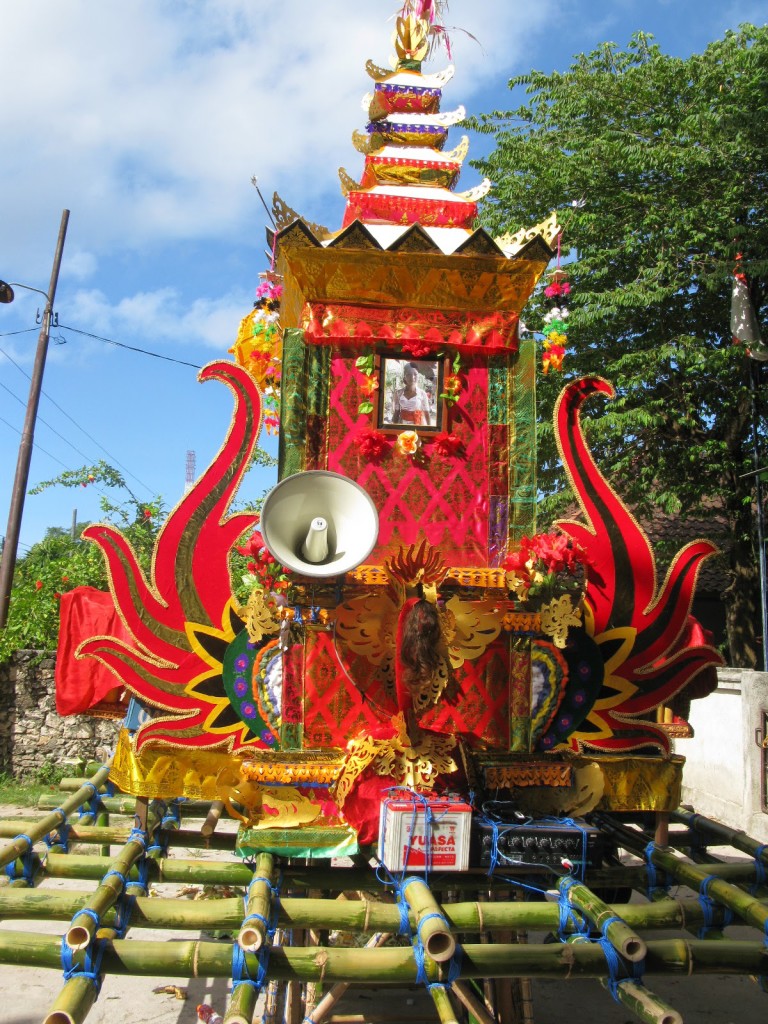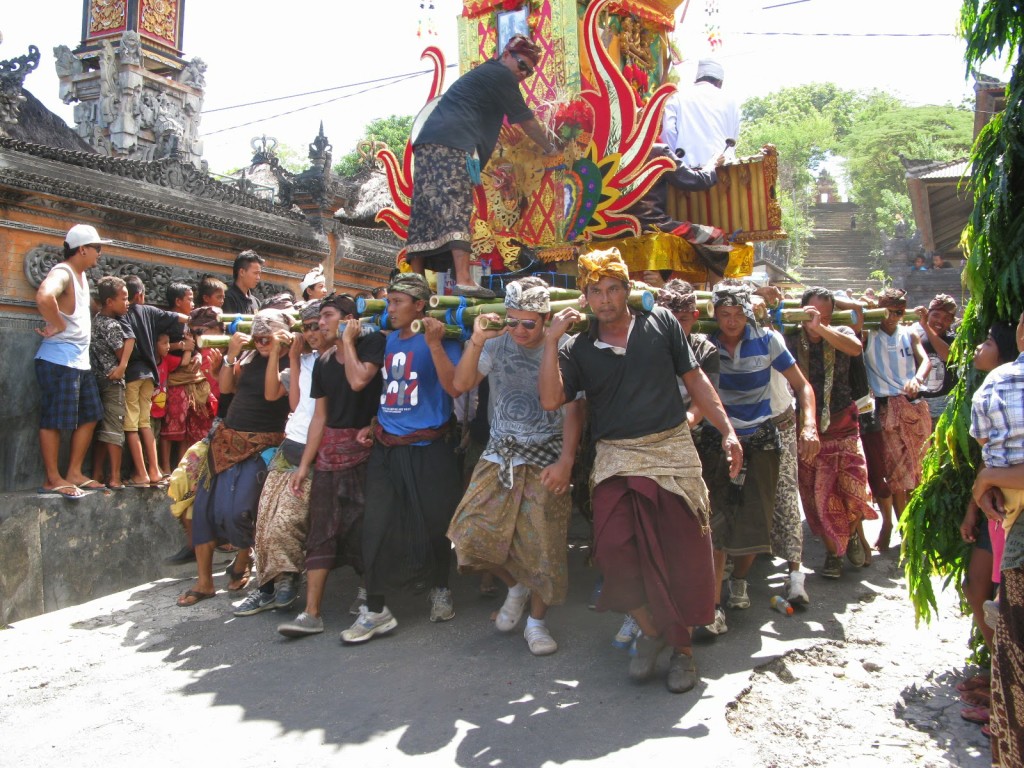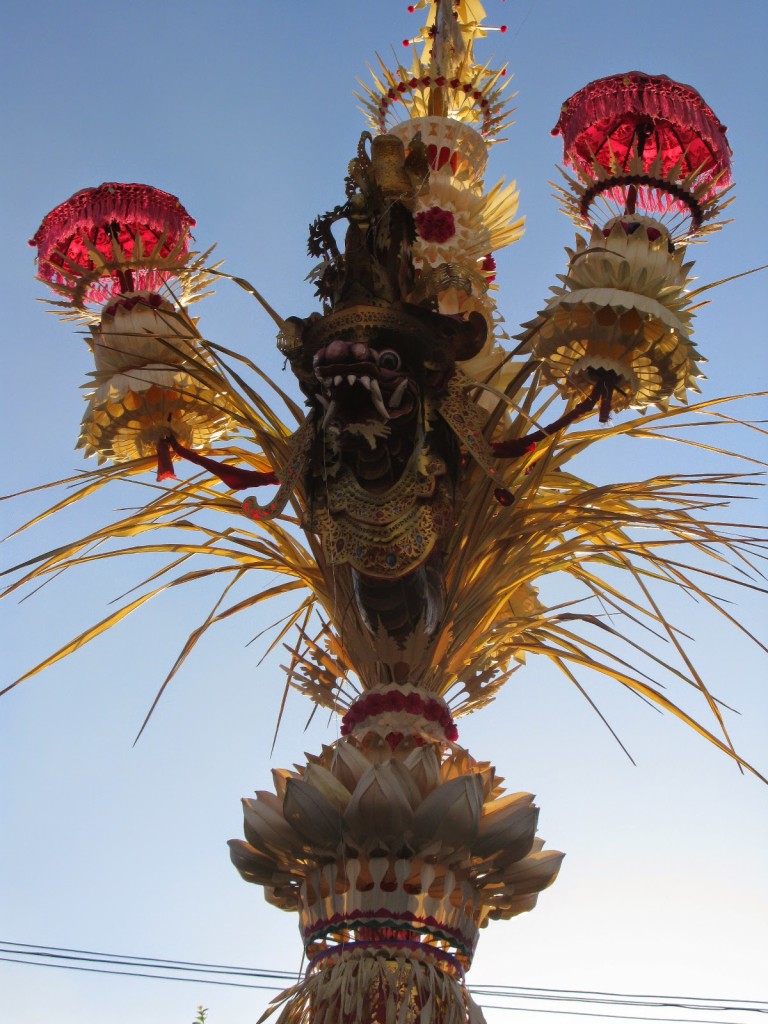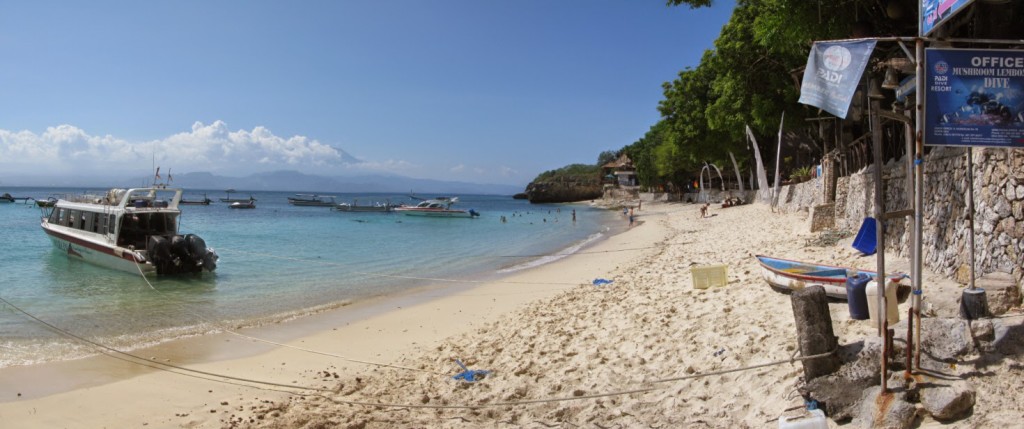
Ahh, Lembongan. Bali as it might have been 30 years ago, but with wifi.
Our trip to Nusa Lembongan by fast boat took about 30 minutes. We’d chosen this over the slower, smaller, cheaper “public” boat which takes about an hour and a half, has no safety precautions whatsoever, and where people share the space with sacks of rice, building materials, live ducks, and whatever else the 5,000 inhabitants of Lembongan need that day. It also meant that we could go direct from Padang Bai rather than returning to Sanur first. Luckily the sea was calm, since embarkation at both ends is via the beach – ie you wade (but porters load the luggage, so it’s not too difficult unless the sea is rough). The boat pulled up in the largest and busiest beach at Jungutbatu, but we were quickly delivered to our guesthouse just inland from Mushroom Bay, a much smaller and quieter beach.
There are no cars on Lembongan – pick-up trucks ferry passengers to their hotels and deliver goods to customers, otherwise the only transport is by fishing boat or motorcycle. It’s probably one of the few places in the world where you might see a child driving themselves to primary school on a motorbike – but Lembongan is such a sleepy, laid back kind of place that this sight didn’t actually strike me as odd, although the potholes and lack of safety helmets probably don’t make it the safest place to ride.
Tao’s House has only been open a month or two but it seems to be solidly occupied, probably because it’s the only cheap-but-nice option with a pool in Mushroom Bay. With only two air conditioned rooms (out of a total of six) we were lucky to get one. It’s only a 5 minute walk down to the beach, where the sand is clean, the water blue, and half a dozen hotel restaurants line the beach, with a few more along the road behind. A couple of general stores that also sell flip-flops and beachwear provide the only retail therapy. Unless you are a surfer or a diver there’s little to do but read, write, surf the internet, draw and swim, and our days are varied by whether we spent them on the beach or at the hotel.
Most mornings I rise before 7am to walk for an hour or so, before it gets too hot. Nusa Lembongan is small, so although Mushroom Bay is on the north coast a walk to the cliffs, crashing waves and blowholes of the Devil’s Tears on the west coast, or down through Lembongan village to the south coast, only takes about 20 minutes, and it’s difficult to get too lost on an island of 8sq km. Mostly I stick to the roads – after the 7am ‘rush hour’ of locals heading to work in one of the hotels or restaurants they’re just quiet country lanes with little traffic. I’ve read that there are no poisonous snakes here, but footpaths might peter out or bring me face to face with a dog who thinks (with justification) that I really shouldn’t be there.
Nusa Lembongan is much drier than Bali, and its limestone bedrock ensures that there are no permanent lakes or rivers. No rice is grown here – tracts of scrubby trees sheltering solitary tethered cows (mostly unseen, but given away by the bamboo bells around their necks) are punctuated by a few fields of cassava. When I first saw these cows on Bali I thought they were similar to Jerseys, but in fact they are a distinct species whose wild ancestor, the endangered banteng, still roams in Bali’s wilder corners. Slopes have stony terraces that may once have grown maize or peanuts, but which have been reclaimed by trees.
Close to houses are the obvious banana and coconut trees (mostly the orange husked variety here) together with mango, cashew and papaya. Elsewhere I can only recognise spindly acacia and tall, silver trunked sal with its dinner plate leaves. Now, at the start of the dry season, leaves are green but those on the undergrowth are beginning to wilt. The pervading smell is of cows and incense, the sounds are birdsong (sadly I never spotted the beautiful but endangered Bali starling) and the distant roar of the sea to the west. Nodody seems to walk anywhere, so the only other pedestrians are the occasional startled farmer en route to his cassava fields. Despite the fact that they carry machetes they seem more scared of me than vice versa – they probably think I’m bonkers, tramping around the countryside for no apparent reason.
Along the south coast road between Lembongan village and the start of the mangrove swamp that covers the north and east of the island, seaweed is spread to dry on every flat space available. Unfortunately one of the side effects of the drying seaweed is an abundance of flies, which head straight for your food wherever you are on Lembongan. The shallow clear water between Nusa Lembongan and Nusa Ceningan apparently provides the perfect environment for seaweed farming, and every low tide men paddle out in shallow canoes to haul weed-laden strings from the sea bed and deliver them to women who pull the offshoots from the ‘starter’ pieces tied to the strings. The strings are then returned to the frames in the sea. The more valuable red shoots are separated from the green, and when it’s all been dried it’s bagged up and shipped to China for use in herbal medicine, cosmetics and food (it’s made into a thickening agent). Seaweed farming is the main industry on Lemongan and most families are involved in it, although it’s only been going since the 1980s, and it is presumably the reason for the abandoned terraces. However its days may be numbered – it’s very noticable that all the islanders who are involved in the more lucrative tourist trade are under 35 while only the older people appear to farm seaweed, presumably because they did not learn English at school.
Usually we walk down to the beach for dinner, and catch the sunset if we’re early enough. There isn’t a huge choice of food – the menus are all fairly similar, with the same Indonesian staples (chicken or fish satay & rice, chicken or fish curry & rice, steamed chicken or fish & rice, fried rice with…er, chicken or fish..) plus a few pasta dishes and pizzas and a few ‘continental’ dishes that are distinguished by their accompanying potatoes, upon which we fall enthusiastically. Potatoes are a luxury item here. The range of fruit and veg is very limited both in the restaurants and in the shops in Lembongan village – I suspect that most locals have a very restricted diet. At Tao’s House the owner’s wife told us that the fruit required for the Galungan festival had cost her over £50 – 10 days’ wages for a labourer. During our stay she made at least one trip to the mainland and returned with sacks of potatoes, onions and watermelons – even with the boat fare it was cheaper than buying on the island, assuming the produce was even available. The downside of island living.
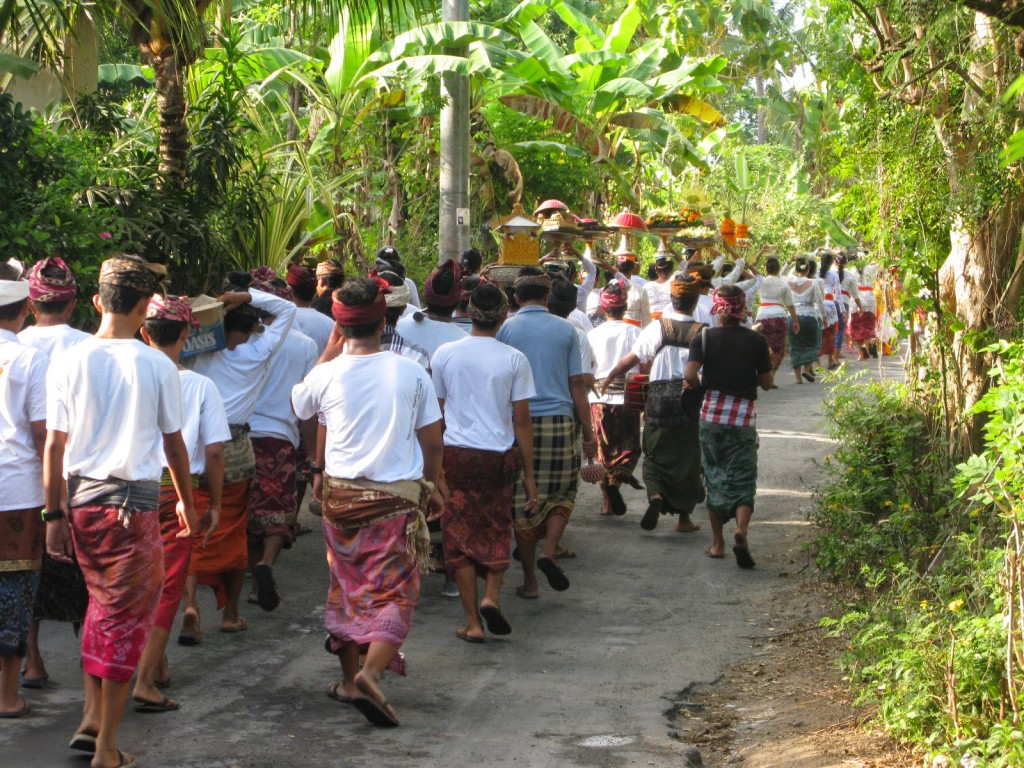
As I left for my morning walk one day I ran straight into a procession of people making their way to the beach. About 20 women in their best lacy blouses, sashes and sarongs were carrying offerings on their heads – behind them, a similar number of sarong-clad men formed a mobile gamelan band. Putu junior, son of the gursthouse owner, told me it was a funeral, the main ceremonial of which would take place in the village later. As Putu had been a bit vague about the time we got there far too early, but sitting in the central square by the big banyan tree watching the comings and goings of the village was no great hardship. A row of gossiping, childminding grandmothers were occupying the steps of the small market area, empty of sellers now, facing the funerary tower that had been placed beneath the banyan tree. Set on a bamboo platform, this construction of wood and paper was about 20ft tall and heavily decorated. It also featured a sound system with loudspeaker. More people started to arrive, including men with walkie-takies. A snack cart turned up. Clearly this was an Event.
Suddenly the bamboo platform, which had acquired two white-clad priests, two gamelan players, and a guy whose function seemed to be to ensure that the tower didn’t fall over, was hoisted onto the shoulders of around 30 men who proceeded to carry it up and down the road, wheel it around, and generally jig about with it, all to a spirited gamelan performance by both the players on the platform and some extras at ground level. Unfortunately the guys holding the electricity cables out of the way with forked poles didn’t move quickly enough, and the top of the tower was sliced off – oops. After about 15 minutes of this, by which time the bearers looked close to collapse, a procession of women in their finest traditional outfits appeared, carrying a white cloth perhaps 100ft long above their heads. Behind them, men carrying the coffin. I expected them to stop in the square, but instead they continued up the hill to a patch of waste ground just outside the village, followed by the guys with the tower and about 500 villagers.
A brief stop to slide the coffin into a gap at the base of the tower and for a young male relative to climb aboard to stand guard over it (as if the edifice weren’t heavy enough already) and we were off again up the steep hill to the burial ground about half a mile away. A bit more to-ing and fro-ing with the tower, as though the deceased was reluctant to arrive at the cremation site, and the bearers’ job was done. With surprisingly little ceremony the coffin was removed from the tower, and the shroud-wrapped body taken out, placed on a small platform by the side of the road and covered with a sheet of corrugated iron. A burner attached to a gas cannister was poked underneath and, to an accompaniment of gamelan and female singing, the flames were lit.
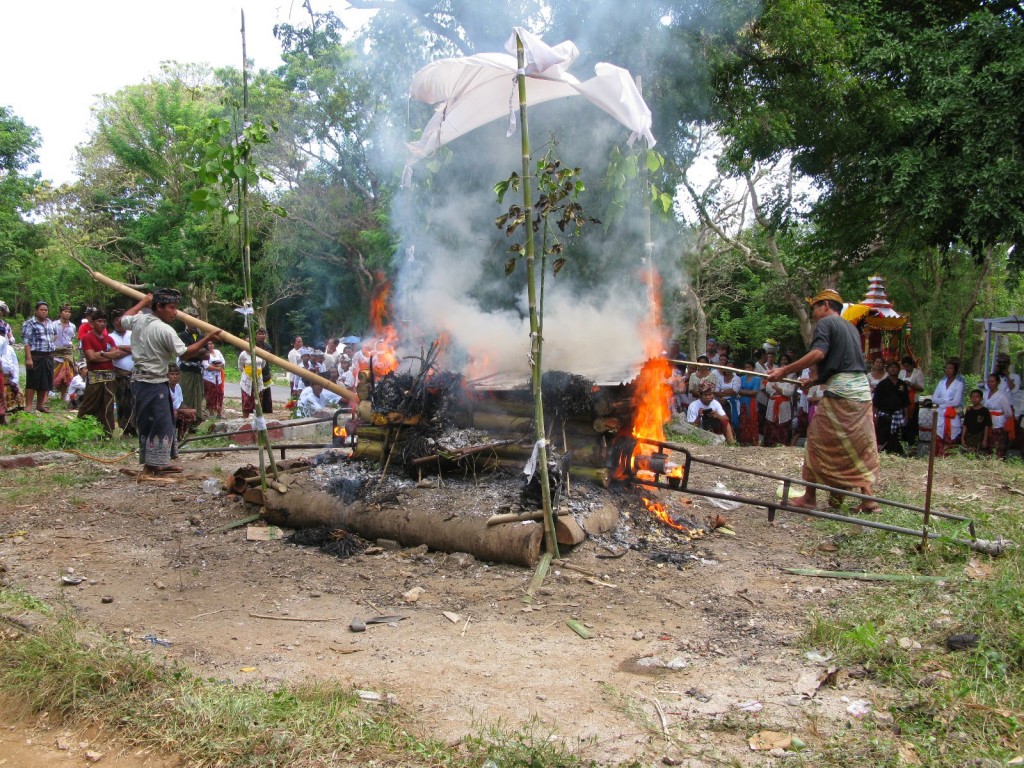
When the time comes, I think I’d like a Balinese style funeral – it was all rather jolly. Sadly I think the Health & Safety bods might have some objections….


